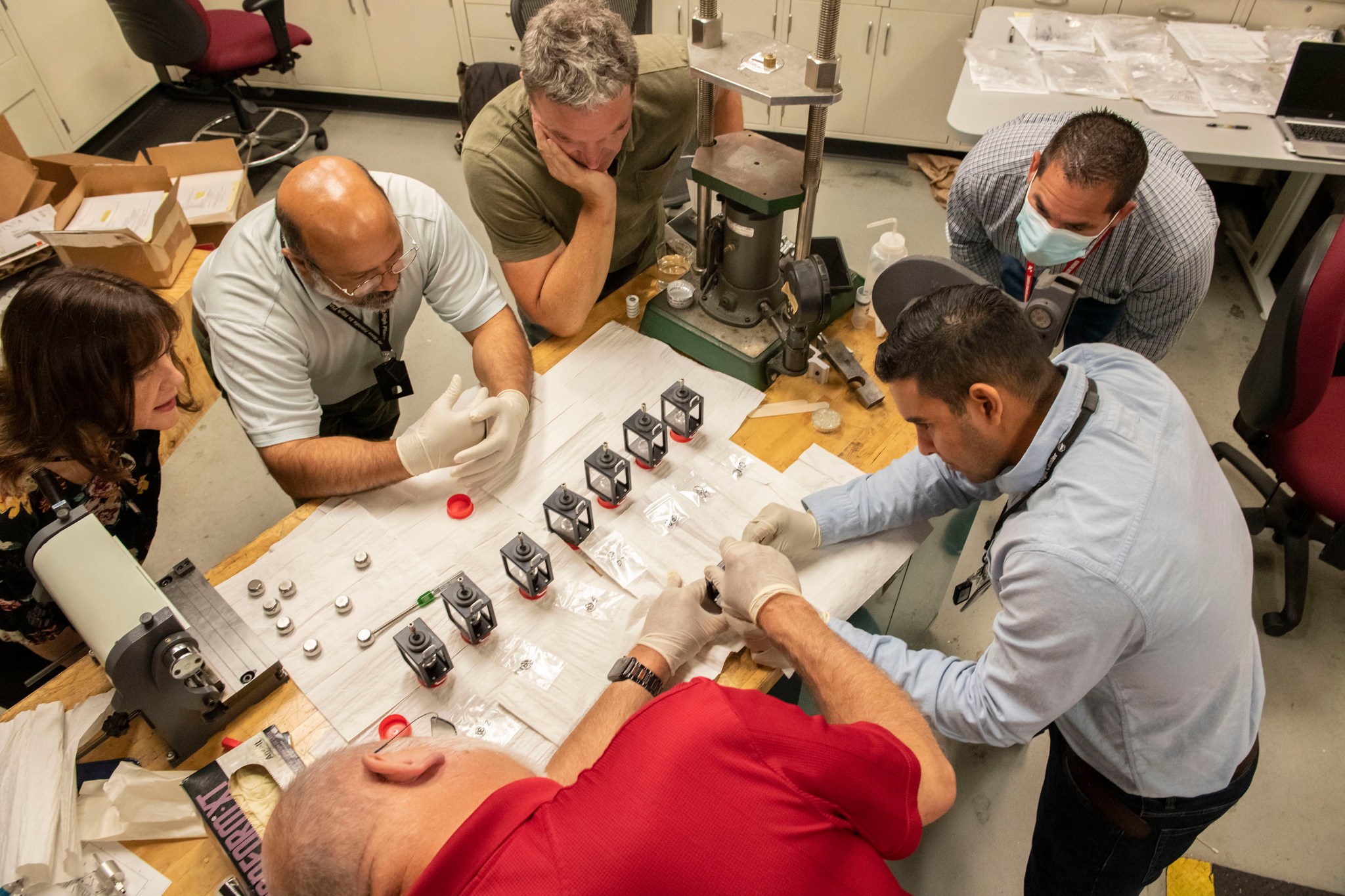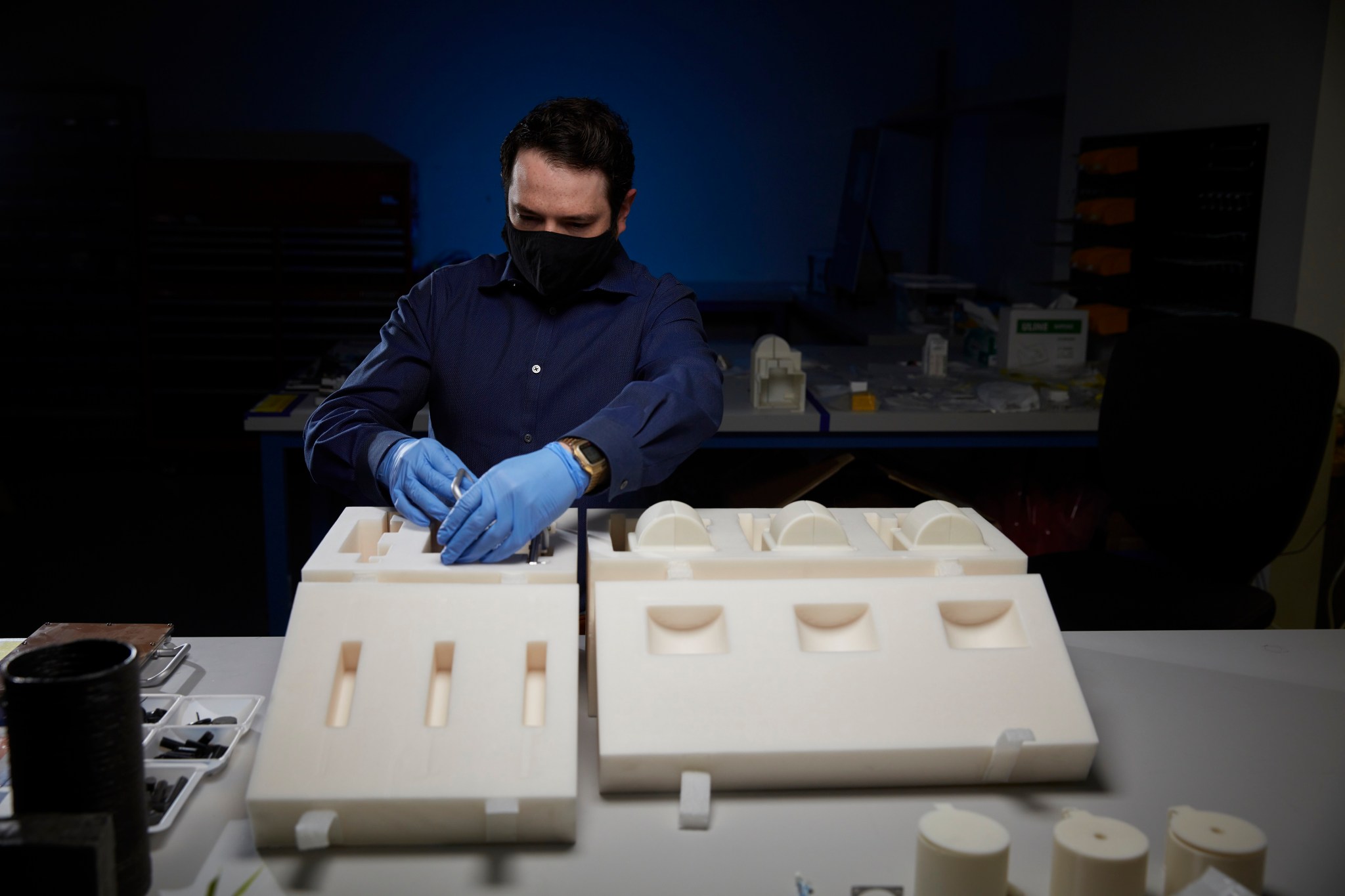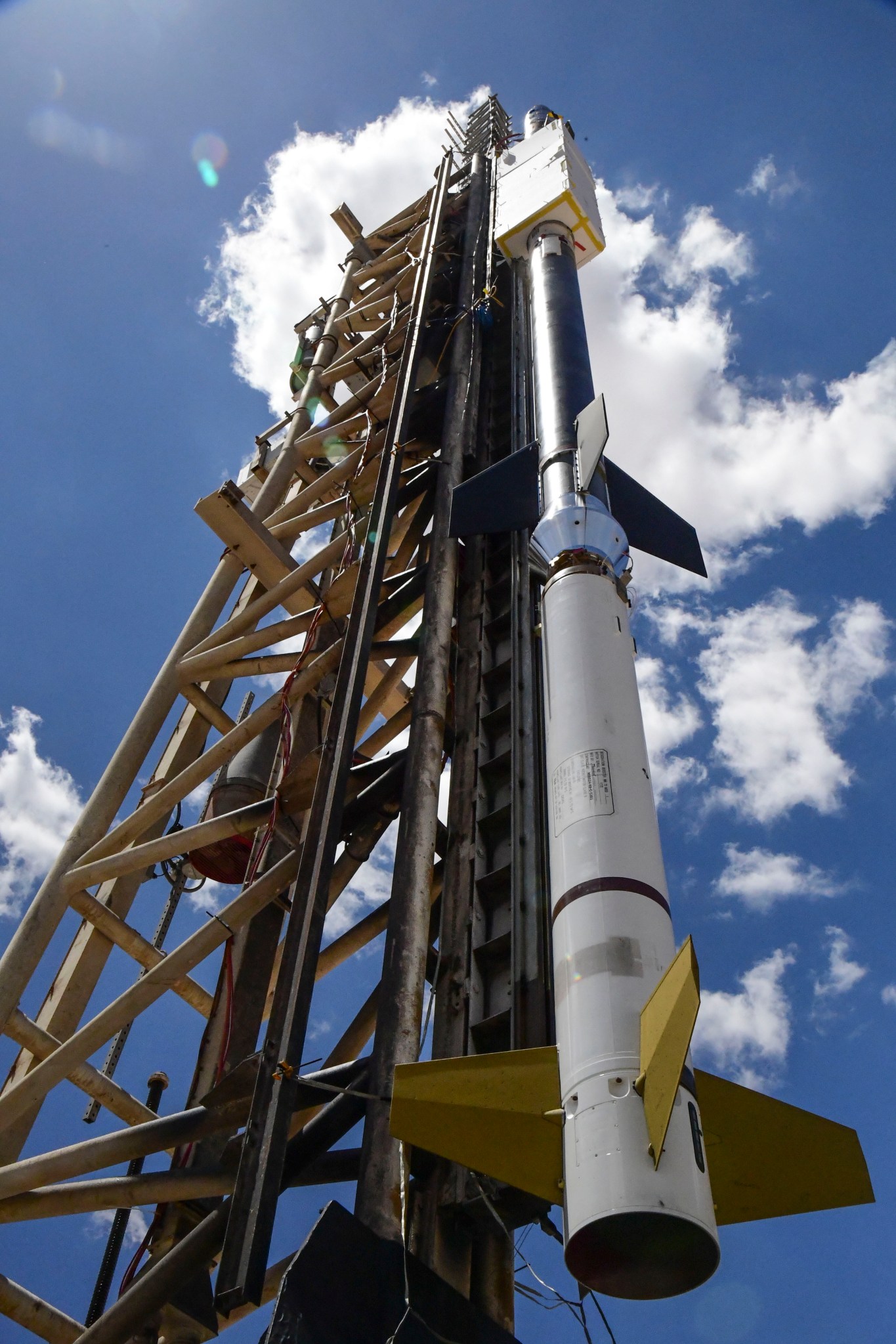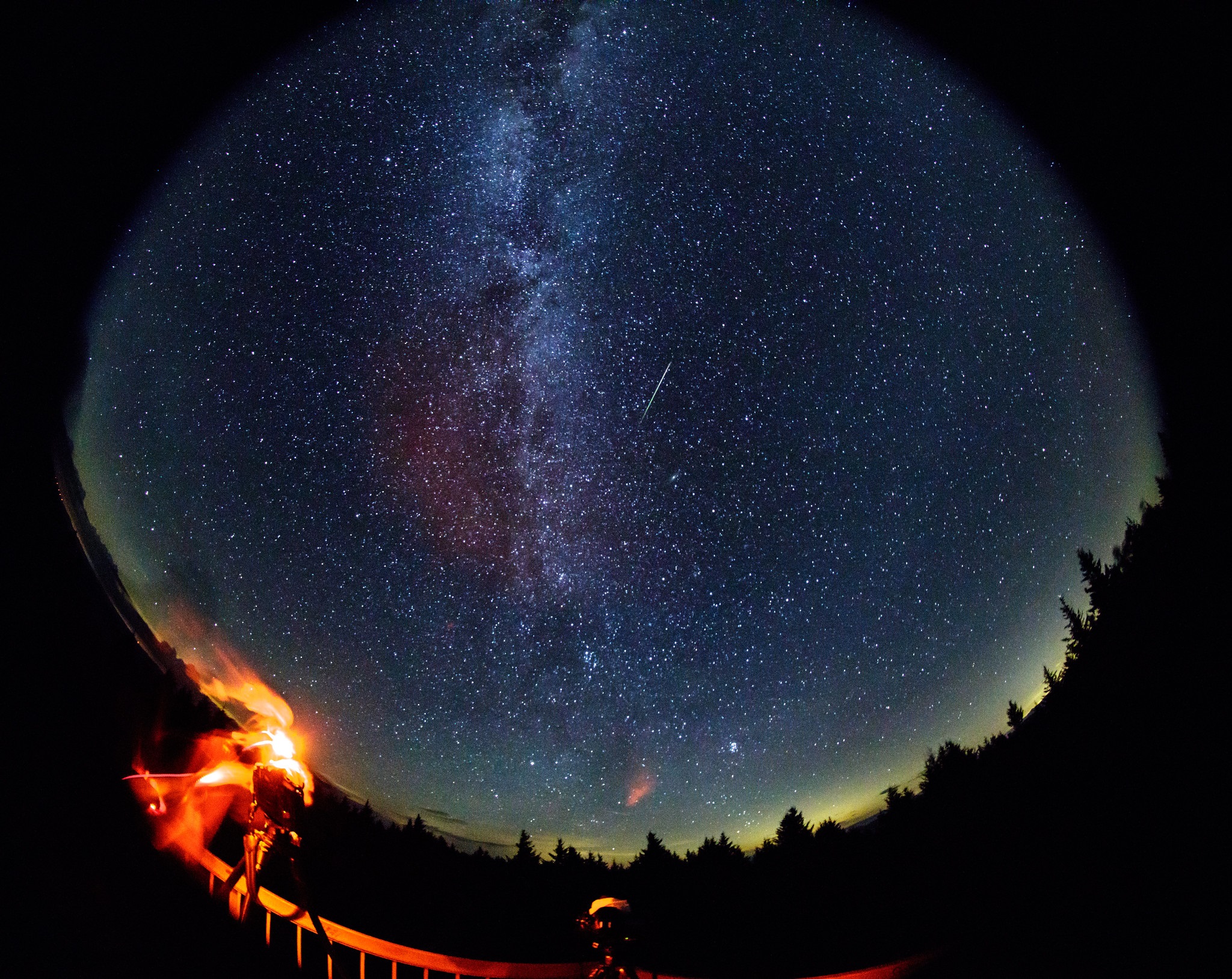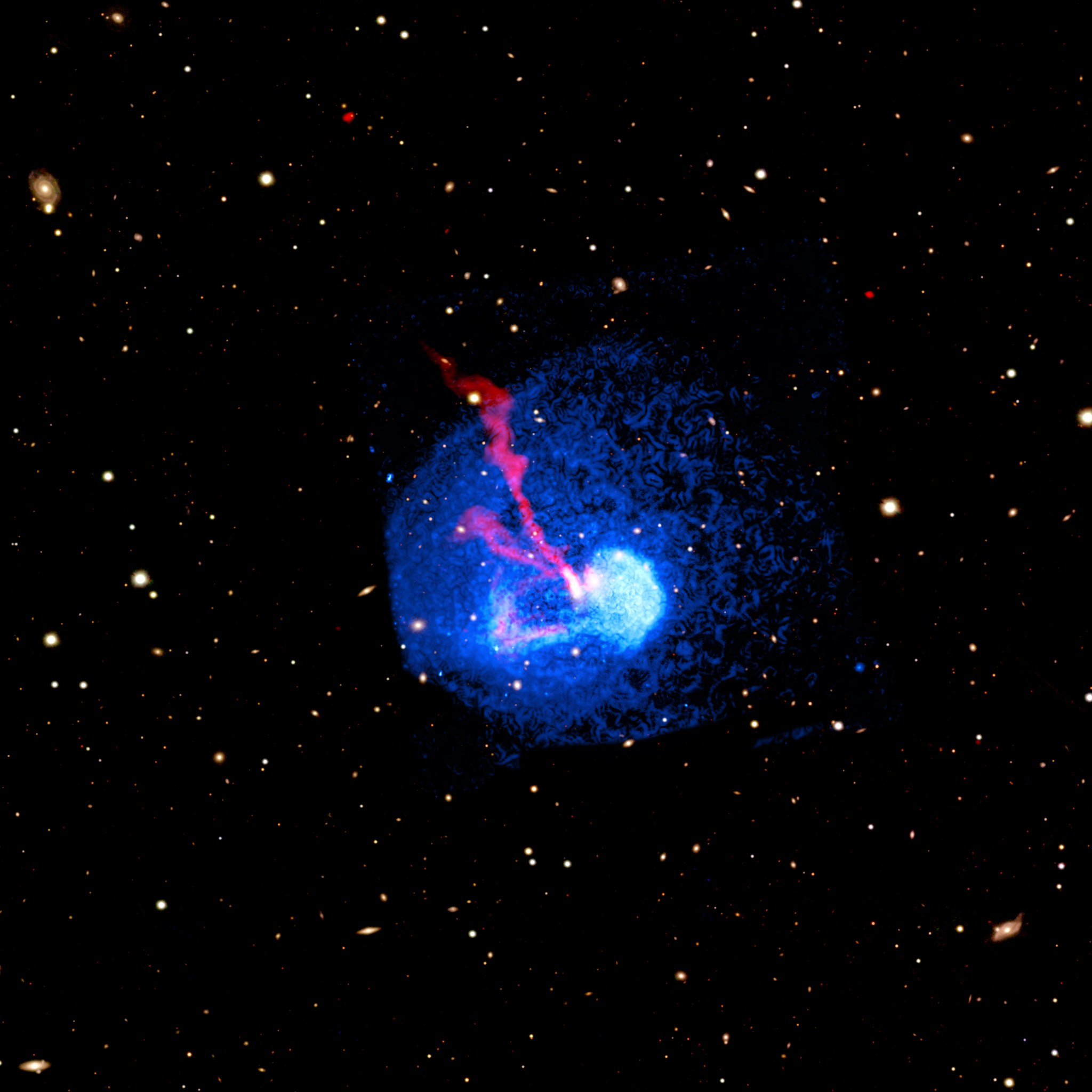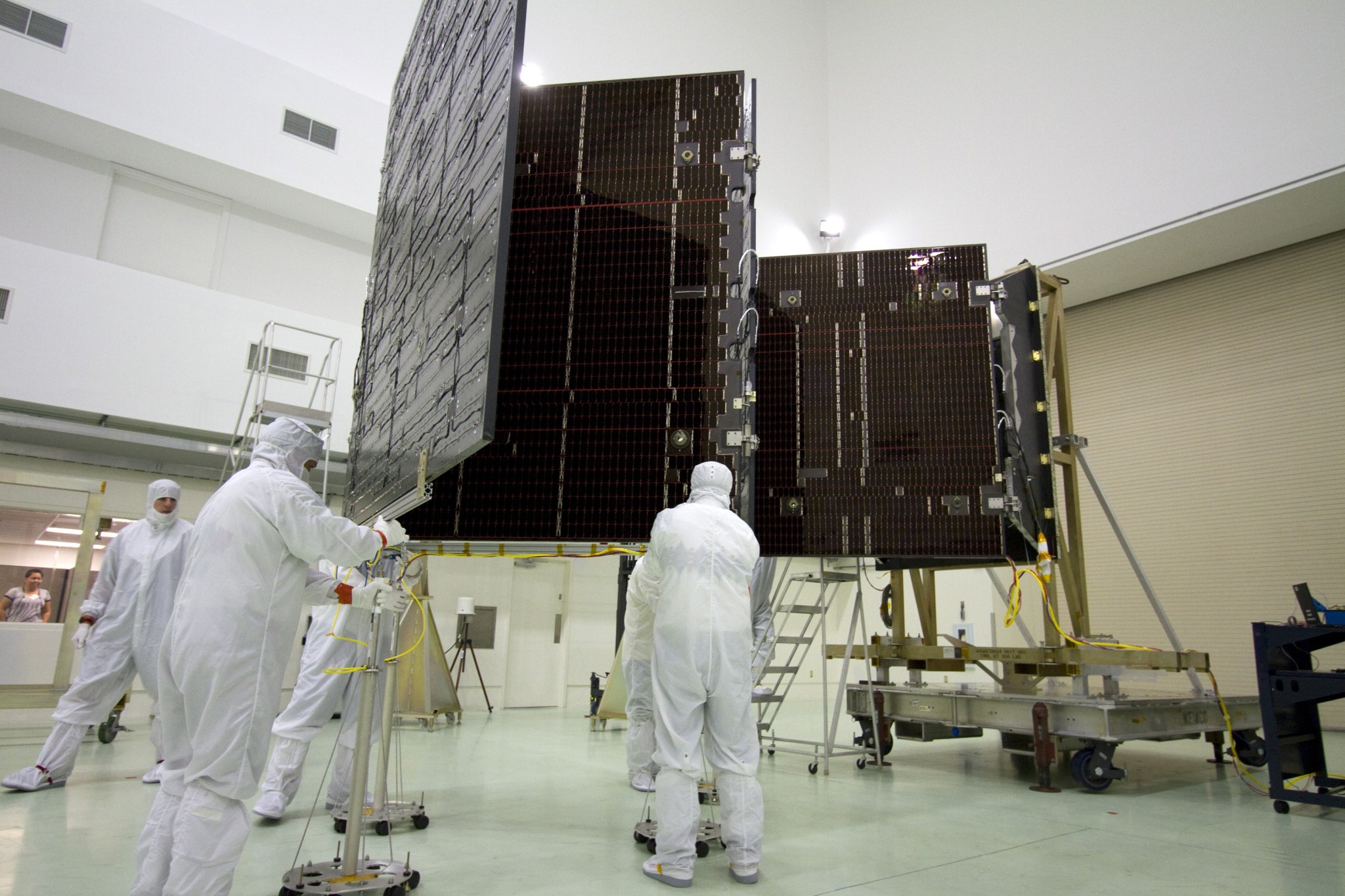Trio of Payloads with Marshall Ties Launching to Space Station
Three experiments with ties to NASA’s Marshall Space Flight Center are headed to the International Space Station on Northrop Grumman’s 16th commercial resupply services mission. Launch of the Cygnus spacecraft is targeted for no earlier than Aug. 10, at 4:55 p.m. CDT from NASA’s Wallops Flight Facility.
The experiments carried by this spacecraft add to a long list of studies conducted during more than 20 years of continuous human habitation of the orbiting lab, helping researchers explore farther into space and benefiting humans back on Earth.
Getting the CO2 out
The Four Bed CO2 Scrubber demonstrates a technology to remove carbon dioxide from a spacecraft. It is one of two carbon dioxide removal technology demonstrations for the space station’s Exploration Environmental Control and Life Support Systems. Based on the current system and lessons learned from its nearly 20 years of operation, the Four Bed CO2 Scrubber includes mechanical upgrades and an improved, longer-lasting absorbent that reduces erosion and dust formation. Absorption beds remove water vapor and carbon dioxide from the atmosphere, returning water vapor to the cabin and venting carbon dioxide overboard or diverting it to a system that uses it to produce water.
This technology was designed, developed, and tested at Marshall and could improve the reliability and performance of carbon dioxide removal systems in future spacecraft, helping to maintain the health of crews and ensure mission success. It has potential applications on Earth in closed environments that require carbon dioxide removal to protect workers and equipment.
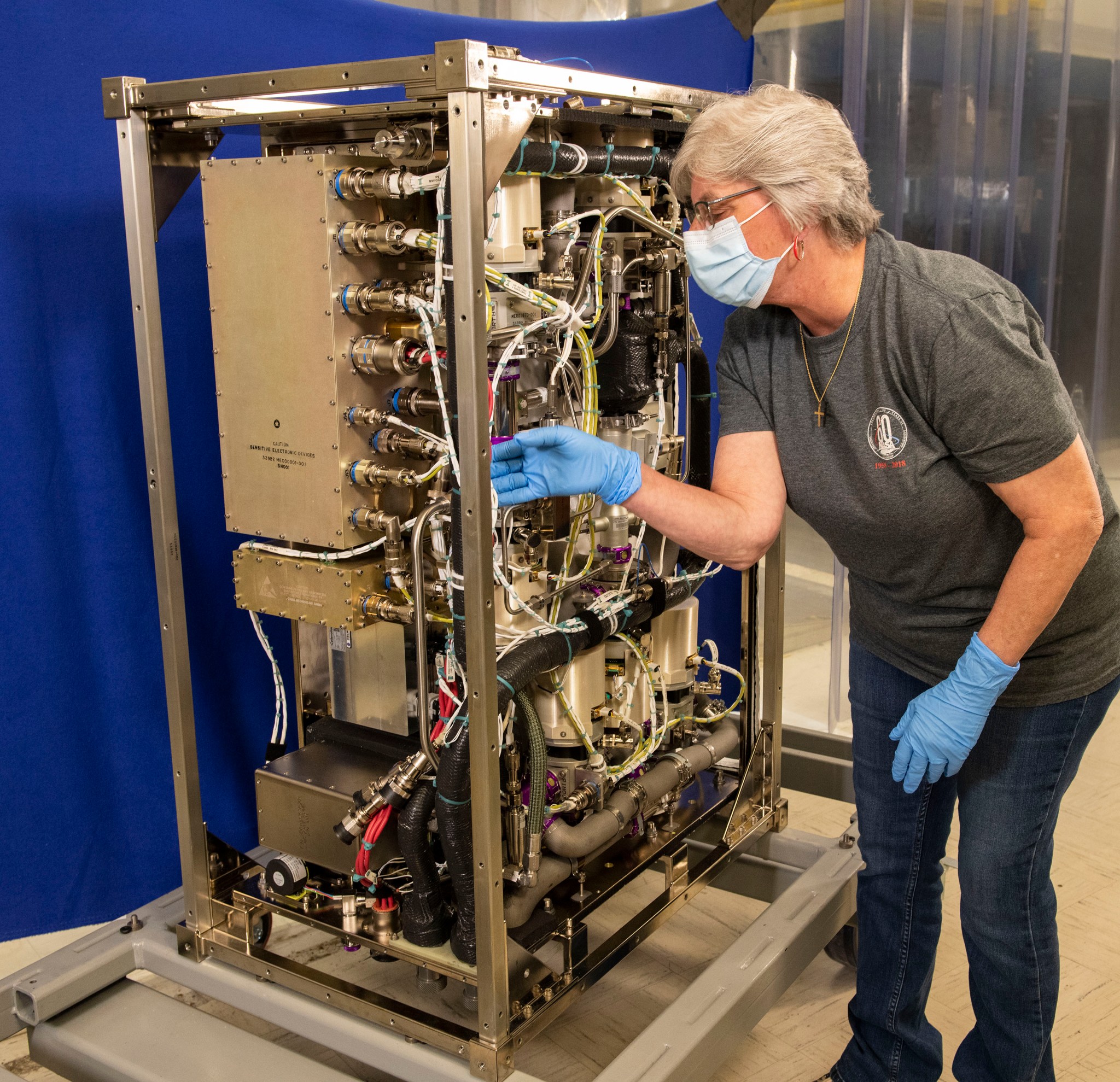
From dust to dorm
Using resources available on the Moon and Mars to build structures and habitats could reduce how much material future explorers need to bring from Earth, significantly reducing launch mass and cost. The Redwire Regolith Print study demonstrates 3D printing on the space station using a material simulating regolith, or loose rock and soil found on the surfaces of planetary bodies such as the Moon. Results could help determine the feasibility of using regolith as the raw material and 3D printing as a technique for on-demand construction of habitats and other structures on future space exploration missions.
The investigation prints samples using a 3D printer aboard the station and returns them to Earth for analysis and comparison with samples produced in a ground facility prior to launch. This comparison helps validate that the process works at levels of gravity lower than that on Earth. Samples will be returned to Earth by SpaceX 23 and tested in Marshall’s additive manufacturing facility in Building 4707.
Pursuing a medical breakthrough
The ring-sheared drop investigation studies the formation of potentially destructive amyloid fibrils, or protein clusters, like those found in the brain tissue of patients battling neurodegenerative diseases such as Alzheimer’s and Parkinson’s. It examines the amyloid fibrils without the complications associated with the solid walls of a container, because in microgravity, surface tension provides containment of the liquid. Results could contribute to better understanding of and treatments for these diseases as well the development of advanced materials, contributing to the ongoing commercialization of the orbiting lab.
The ring-sheared drop payload initially launched to the space station in 2019, but the hardware needed modifications to achieve the desired results. A Marshall team has worked to improve the efficacy of the experiment by making necessary adjustments.
The space station is a convergence of science, technology, and human innovation that demonstrates new technologies and enables research not possible on Earth. Marshall serves as the primary space station science command post, as its payload operations team coordinates all U.S. scientific and commercial experiments. The space station remains the springboard to NASA’s next great leap in exploration, including future human missions to the Moon and eventually to Mars.
NASA Launches X-ray Spectrometer Mission to Probe Mysteries of Solar Corona
By Rick Smith
NASA researchers successfully launched a sophisticated X-ray solar imager on a brief but potentially illuminating suborbital flight via sounding rocket to gather new insight regarding how and why the Sun’s corona grows so much hotter than the actual surface of Earth’s parent star.
Developers at NASA’s Marshall Space Flight Center call the mission “MaGIXS” – short for Marshall Grazing Incidence X-ray Spectrometer. It launched from White Sands Missile Range in New Mexico on July 30.
The MaGIXS mission dispatched its payload – which included a high-powered camera, telescope, and X-ray spectrometer containing a matched pair of grazing incidence parabolic mirrors – to study so-called “soft” X-rays at a wavelength that hasn’t been previously observed in such detail.
“Our knowledge of the corona’s heating mechanisms is limited, partly because we’ve not yet been able to make detailed observations and measurements of the temperature distribution of the solar plasma in the region,” said Marshall heliophysicist Amy Winebarger, principal investigator for the MaGIXS mission.
The Sun’s surface temperature is more than 10,000 degrees Fahrenheit – but the corona routinely measures more than 1.8 million degrees Fahrenheit.
One of the biggest questions in astrophysics, Winebarger said, is how this process occurs. Is it a series of constant internal solar explosions, or is there a periodic rise and fall in the heating process? Scientists are considering two possible answers. The first is tied to nanoflares, relatively small coronal heating events which may cause the magnetic lines of energy on the Sun’s surface to tangle and coil up like spaghetti in a boiling pot of water, sporadically superheating regions of the corona. The second possibility is wave heating, a near-constant internal solar agitation similar to that of a washing machine, which sends waves of energy up to the surface, where they’re expelled to heat the corona.
Effectively plumbing this turbulent solar region doesn’t require observations in high-energy X-rays. In fact, Winebarger said, MaGIXS will work in the same soft X-ray wavelength typically employed by doctors during routine X-ray examination of patients.
Past soft X-ray spectrometer missions have only observed the Sun’s corona over a fairly large field of view, or with limited energy diagnostic capabilities. MaGIXS, by comparison, will be the first imager to measure specific temperature distributions at different parts of an active solar region. That precision data will help scientists resolve the debate concerning how – and how often – the corona is superheated.
Shedding new light on coronal heating mechanisms could help researchers better understand and even predict potential solar flares and coronal mass ejections, both of which occur most often in connection with regional spikes in coronal heating. These violent outbursts can interfere with communications satellites and electronic systems, even causing physical drag on satellites as Earth’s atmosphere expands to absorb the added solar energy.
Indeed, the MaGIXS sounding rocket mission also serves as a test bed for instrumentation for future NASA missions to study solar flares in greater detail, possibly tying their origins to measurable coronal activity and helping demonstrate how advanced flight hardware and space systems can be hardened to weather high-energy tantrums from Earth’s star.
NASA routinely uses sounding rockets for such brief, focused science missions. They’re often smaller, more affordable, and faster to design and build than large-scale satellite missions, Winebarger said.
“They offer unique, suborbital science opportunities, a chance to develop innovative new instrumentation, and rapid return on investment,” she added.
The NASA team expects to retrieve the flight payload immediately after the flight and has begun processing datasets. They hope to issue their findings in coming months.
The MaGIXS mission was developed at Marshall in partnership with the Smithsonian Astrophysical Observatory in Cambridge, Massachusetts. Marshall engineers developed and fabricated the telescope and spectrometer mirrors, and the camera. The integrated instrument was exhaustively tested in Marshall’s state-of-the-art X-ray & Cryogenic Facility. The Massachusetts Institute of Technology in Cambridge provided the spectrometer’s integrated diffraction grating. The University of Central Lancashire in England provided software to analyze the slit-jaw images, which enable the science team to determine where the payload is pointing in real time during flight.
Smith, a Manufacturing Technical Solutions employee, supports Marshall’s Office of Strategic Analysis & Communications.
NASA Prepares Three More CubeSat Payloads for Artemis I Mission
Three more secondary payloads that will travel to deep space on the Artemis I mission were integrated for launch July 23, and another is ready for installation at NASA’s Kennedy Space Center.
The satellites – called CubeSats – are roughly the size of a large shoe box and weigh no more than 30 pounds. Despite their small size, they enable science and technology experiments that may enhance understanding of the deep space environment, expand knowledge of the Moon, and demonstrate new technologies that could be used on future missions.
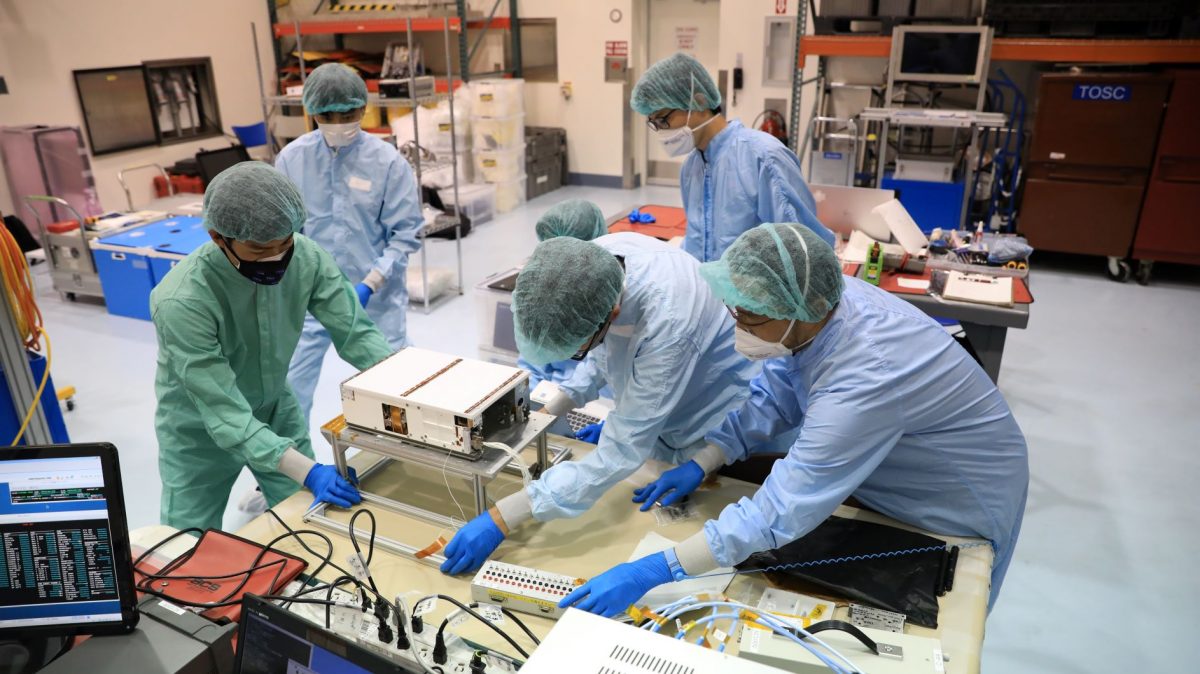
Outstanding MOon exploration Technologies demonstrated by NAno Semi-Hard Impactor, or OMOTENASHI, was developed by the Japan Aerospace Exploration Agency. OMOTENASHI is the only Artemis I secondary payload that will conduct a controlled landing on the Moon’s surface. Its primary objective is to test the technologies and trajectory maneuvers that allow a small lander to land on the Moon while keeping its systems – including power, communication, and propulsion – intact. Testing these systems around and on the Moon can help with development of similar small landers that could explore other planets. The spacecraft will also measure the radiation environment beyond low-Earth orbit, providing data that will help develop technologies to manage radiation exposure for human exploration. If successful, OMOTENASHI will be the smallest spacecraft ever to land on the lunar surface and will mark Japan as the fourth nation to successfully land on the Moon.
ArgoMoon, developed by Italian company Argotec and sponsored by Agenzia Spaziale Italiana, Italy’s national space agency, will perform autonomous visual-based proximity operations around the Interim Cryogenic Propulsion Stage, the in-space stage of the Space Launch System that provides the propulsion to send Orion on a lunar trajectory. The CubeSat will use high-definition cameras and advanced imaging software to record images of the stage and later of the Earth and the Moon for historical documentation, provide mission data on the deployment of other CubeSats, and test optical communication capabilities between the CubeSat and Earth. ArgoMoon will use a hybrid micropropulsion system that combines green mono-propellant and cold gas propulsion in a single system to provide attitude control and orbital maneuvering using a small amount of power.
The enhanced attitude capabilities are also used to run and validate artificial intelligence-based algorithms for autonomous Failure Detection, Isolation, and Recovery systems that perform continuous monitoring of the health of the satellite to detect any potential fault. In the case of fault detection, this service performs several operations to solve the problem. If the fault is not recoverable, the satellite goes in safe mode, which means that only the functionalities to keep the satellite alive and to communicate with ground are used.
ArgoMoon’s mission is a forerunner of technologies for deep space application that can be used for inspection of satellites not originally designed to be serviced, without the involvement of the ground segment.
BioSentinel is the only CubeSat that will contain a biological experiment on Artemis I and will be the first CubeSat to support biological research in deep space. It is being kept in a controlled environment at Kennedy. At a date closer to launch, it will be placed in the Orion stage adapter.
BioSentinel will be among the first studies of the biological response to space radiation outside low-Earth orbit in nearly 50 years. Its primary objective is to measure the impact of space radiation on living organisms – in this case, yeast – over long durations beyond low-Earth orbit.
Developed by NASA’s Ames Research Center, BioSentinel will enter an orbit around the Sun via a lunar flyby. The experiment will use yeast as a “living radiation detector” to evaluate the effects of ambient space radiation on biology. Human cells and yeast cells have many similar biological mechanisms, including DNA damage and repair.
Experiments using the BioSentinel instruments will also take place on the International Space Station and on the ground to demonstrate how varied amounts of radiation affect the yeast. While Earth-bound research has helped identify some of the potential effects of space radiation on living organisms, no terrestrial source can fully simulate the unique radiation environment of deep space. BioSentinel’s data will provide critical insight on the effects of deep space radiation on biology as NASA seeks to establish long-term human exploration of the Moon under Artemis and prepare for human exploration on Mars.
Seven other CubeSats were previously installed on the Orion stage adapter for the Space Launch System rocket’s first flight. The CubeSats will be deployed after SLS completes its primary mission, launching the Orion spacecraft on a trajectory toward the Moon.
Watch the Skies: Perseids Are on the Rise
By Brice Russ
It’s time again for one of the biggest meteor showers of the year. The Perseids are already showing up in the night skies, and when they peak in mid-August, it’s likely to be one of our most impressive sky watching opportunities for a while.
Meteor-tracking cameras at Mount Lemmon Observatory in Arizona spotted their first Perseid on July 26, but the best chance to see them will start the night of Aug. 11. With the crescent moon setting early, the skies will be dark for the peak viewing hours of midnight (local time) to dawn on Aug. 12.
For those in the Northern Hemisphere, and far away from light pollution, there is a possibility of spotting more than 40 Perseids an hour. Those living in a city may only see a few every hour; skywatchers in the Southern Hemisphere will also see fewer Perseids, with none visible below about 30 degrees south latitude. The night of Aug. 12-13 will be another great opportunity to see the Perseids. With a full Moon – and lower meteor activity – during the Perseids’ peak in 2022 and a waning crescent high in the sky for 2023, this might be the best chance to do some summer skywatching for a few years.
Find somewhere comfortable, avoiding bright lights as much as possible, including phones, and give your eyes some time to adjust to the dark – up to half an hour if possible. The Perseids will appear as quick, small streaks of light. They get their name because they look like they’re coming from the direction of the constellation Perseus, near Aries and Taurus in the night sky, but Perseids in that area can be hard to spot from the perspective of Earth. So just look up and enjoy the show!
If you can’t see the Perseids where you live, join NASA to watch them on social media. Tune in overnight Aug. 11-12 (10 p.m.–5 a.m. CDT) on Facebook, Twitter, and YouTube to look for meteors with space fans from around the world. If skies are cloudy the night of Aug. 11, social media viewing will be the same time on Aug. 12-13. NASA’s livestream will be hosted by the Meteoroid Environment Office at NASA’s Marshall Space Flight Center, which tracks meteors, fireballs, and other uncommon sights in the night sky to inform the public and help keep astronauts and spacecraft safe.
The Perseids are fragments of the comet Swift-Tuttle, which orbits between the Sun and beyond the orbit of Pluto once every 133 years. Every year, the Earth passes near the path of the comet, and the debris left behind by Swift-Tuttle shows up as meteors in the sky. Don’t worry, there’s no chance that Earth will run into the actual comet anytime soon.
NASA has space rock lessons for students, starting with the biggest question: What’s the difference between an asteroid and a meteor? NASA’s Space Place site also has a kid-friendly introduction to meteor showers in general. If you’re looking for something a little more hands-on, try this asteroid-building classroom activity – or, for an older audience, learn how to describe rocks like a NASA scientist.
Russ, a Media Fusion employee, supports Marshall’s Office of Strategic Analysis & Communications.
Chandra Catches Slingshot During Collision
When the titans of space – galaxy clusters – collide, extraordinary things can happen. A new study using NASA’s Chandra X-ray Observatory examines the repercussions after two galaxy clusters clashed.
Galaxy clusters are the largest structures in the universe held together by gravity, containing hundreds or even thousands of individual galaxies immersed in giant oceans of superheated gas. In galaxy clusters, the normal matter – like the atoms that make up the stars, planets, and everything on Earth – is primarily in the form of hot gas and stars. The mass of the hot gas between the galaxies is far greater than the mass of the stars in all of the galaxies. This normal matter is bound in the cluster by the gravity of an even greater mass of dark matter.
Because of the huge masses and speeds involved, collisions and mergers between galaxy clusters are among the most energetic events in the universe.
In a new study of the galaxy cluster Abell 1775, located about 960 million light-years from Earth, a team of astronomers led by Andrea Botteon from Leiden University in the Netherlands announced that they found a spiral-shaped pattern in Chandra’s X-ray data. These results imply a turbulent past for the cluster.
When two galaxy clusters of different sizes have a grazing collision, the smaller cluster will begin to plow through the larger one. Because of its superior mass, the bigger cluster has the upper hand when it comes to gravitational pull. As the smaller cluster moves through, its hot gas is stripped off by friction. This leaves behind a wake, or tail, that trails behind the cluster. After the center of the smaller cluster passes by the center of the larger one, the gas in the tail starts to encounter less resistance and overshoots the center of its cluster. This can cause the tail to “slingshot” as it flies to the side, curving as it extends away from the cluster’s center.
The newest Chandra data contains evidence – including the brightness of the X-rays and the temperatures they represent – for one of these curving slingshot tails. Previous studies of Abell 1775 with Chandra and other telescopes hinted, but did not confirm, that there was an ongoing collision in this system.
Astronomers previously found that Abell 1775 contains an enormous jet and radio source.
This jet is powered by a supermassive black hole in a large elliptical galaxy in the cluster’s center. New data from the LOw Frequency ARray in the Netherlands and the Giant Metrewave Radio Telescope in India reveals that the radio jet is actually 2.6 million light-years long. This is about twice as long as astronomers thought it was before and makes it one of the longest ever observed in a galaxy cluster. The structure of the jet changes abruptly as it crosses into the lower density gas, across the edge of the cold front, implying that the collision has affected it.
According to the new study, the gas motions inside the cluster could be responsible for other structures detected by observing Abell 1775 in radio waves, such as two filaments located near the origin of the jet. The LOw Frequency ARray and Chandra data have also enabled the researchers to study in great detail the phenomena that contribute to accelerating electrons both in this galaxy’s jet and in the radio emission near the center of the larger cluster.
A paper describing the results by Botteon’s team has been published in the journal Astronomy and Astrophysics and is available online.
Read the entire feature here, which includes an alternate explanation for the appearance of the cluster.
NASA’s Marshall Space Flight Center manages the Chandra program. The Smithsonian Astrophysical Observatory’s Chandra X-ray Center controls science from Cambridge, Massachusetts, and flight operations from Burlington, Massachusetts.
Read more from NASA’s Chandra X-ray Observatory here. For more Chandra images, multimedia, and related materials, visit here.
Marshall, Michoud Institute Revised Face Covering Policy
In accordance with the latest federal and NASA guidance, the agency’s Marshall Space Flight Center and Michoud Assembly Facility have instituted a revised face covering policy due to current COVID-19 transmission rates in the Huntsville and New Orleans regions.
All Marshall and Michoud employees – civil servant and contractor – and visitors must wear a proper face covering over their nose and mouth when on-site and indoors, regardless of vaccination status. Fitness centers at Marshall and Michoud have been closed until further notice.
Marshall’s Safe at Work protocol guidelines are being updated to align with the new guidance and any additional federal requirements. Visit the COVID-19 page on Inside Marshall for updates. If you feel sick or have been exposed to someone who has COVID-19, stay home.
“This pandemic can be unpredictable, but be assured we will always make decisions using the most current information and guidance and prioritizing your safety,” Marshall Director Jody Singer said. “Look for more information in the coming days about federal guidance on COVID-19 precautions for all government agencies.
“I understand that uncertainty is a part of our everyday lives now, and I ask for your patience while we continue to work through next steps.”
Mask policies for all NASA centers will periodically be reexamined and updated as local conditions warrant and center leaders will promptly communicate to their workforces any changes. All center mask policies will be posted on NASAPeople under Facility Status.
“When deciding whether to come on-site, please keep in mind the status of the federal government still is ‘open with maximum telework flexibilities to all current telework eligible employees,’” said Melanie Saunders, NASA deputy associate administrator. “We encourage employees who are able to perform their work and conduct meetings virtually to continue doing so.”
Marshall Association Awards Scholarships
The Marshall Association hosted its annual scholarship awards luncheon July 20, presenting six exceptional student achievers, all children of team members at NASA’s Marshall Space Flight Center, with a total of $7,800 in scholarship funds.
The scholarships were awarded to qualifying high school seniors and college freshmen who are children of association members and who are pursuing undergraduate studies in science, technology, engineering, and mathematics – the STEM fields – or associated, non-technical fields.
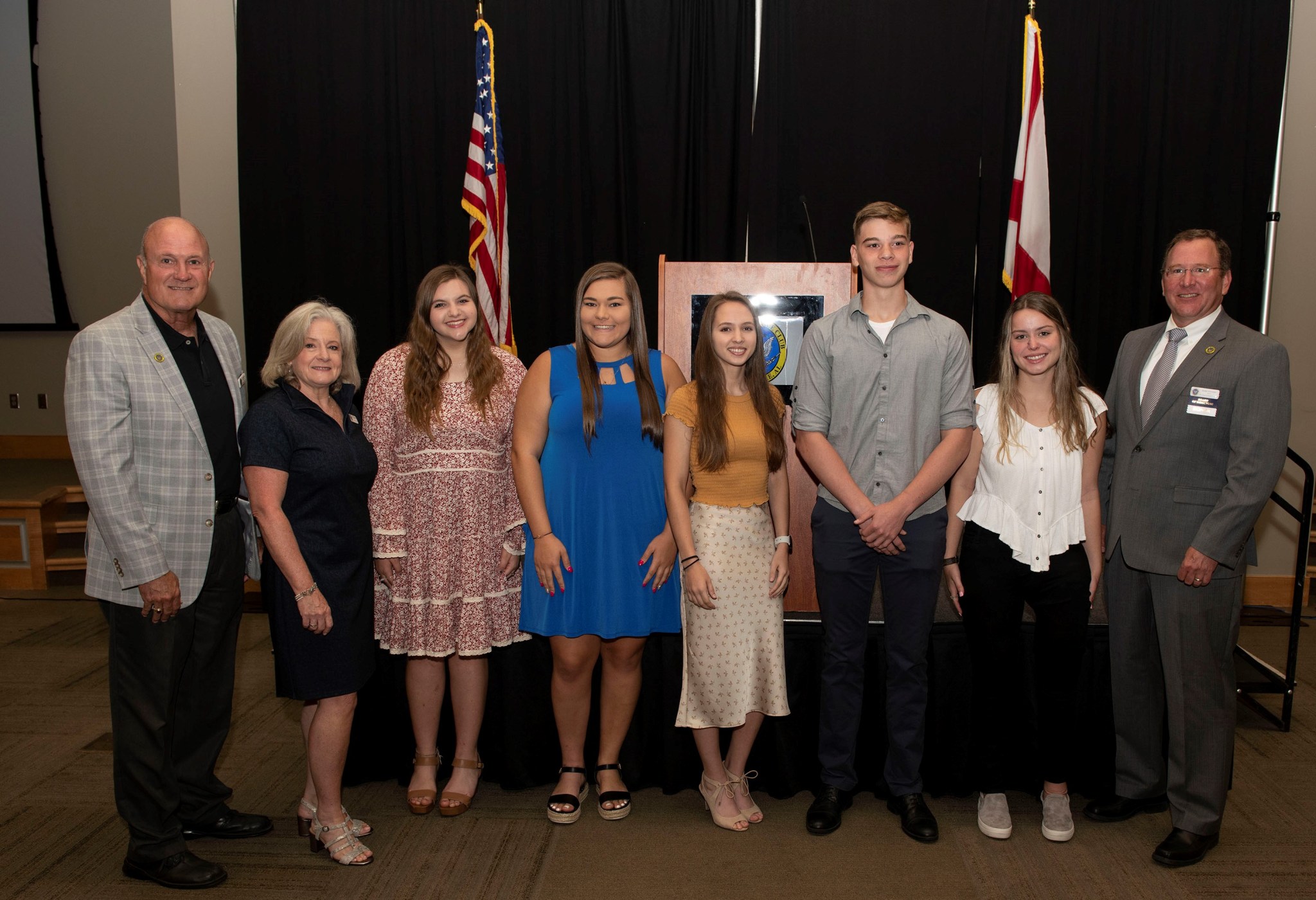
Applicants were evaluated based on academic performance, involvement in extracurricular activities, a written essay, and three letters of recommendation. The essay theme, “Moving Forward Today,” challenged applicants to consider how humanity can overcome challenges and thrive via teamwork, leadership, diversity, inclusion, innovation, and working together.
Each student received a $1,300 scholarship. The recipients were:
Chase Allison: A Grissom High School graduate, Allison plans to attend Mississippi State University in Starkville, where he will study aerospace or mechanical engineering. He is the son of Niki Allison, a budget analyst, and Michael Allison, an engine systems engineer.
Morgan Chasteen: A Cold Springs High School graduate, Chasteen plans to attend Wallace State Community College in Hanceville, where she will pursue a degree in business. She is the daughter of Tina Chasteen, a cost accountant.
Ashtyn Evans: A Grissom High School graduate, Evans plans to study pre-pharmacy at Auburn University, and hopes to eventually earn a doctor of pharmacy degree. She is the daughter of Michelle Evans, a senior systems engineer with the Commercial Crew Program.
Ava Lowman: A Huntsville High School graduate, Lowman plans to attend Auburn University, where she will pursue a degree in health services administration. She is the daughter of Lyndsey Winslette, an environmental engineer.
Julie Parker: A 2019 graduate of Huntsville High School, Parker currently majors in psychology at Birmingham-Southern College. She is the daughter of Keith Parker, a senior modeling and simulation analyst.
Lillian Pennington: An Athens Bible School graduate, Pennington plans to attend Florida College in Temple Terrace and later Auburn University, with a major in business administration or marketing. She is the daughter of Bryan Pennington, Enterprise Software Support Services manager.
The Marshall Association is a professional organization that provides networking and community-building opportunities for members, including NASA civil service employees, contractors, and retirees. The scholarships are supported through membership fees, a National Space Club donation, and the annual Racin’ the Station Duathlon.
For more information on the association, visit Inside Marshall.
Be Alert: Multiple Redstone Construction Projects Underway, Planned
Multiple construction projects are underway or soon starting at Redstone Arsenal, and arsenal leadership is asking those working on-site to exercise caution and not bypass signage, barriers, or construction equipment to access areas currently off-limits. Projects include: Martin Road to Mills Road turn lane extension; Dodd Road/Martin Road intersection improvements and addition of a traffic signal; widening of Dodd Road; widening and turn lane improvements for Fowler Road; and renovating the exercise track off of Patton Road. The road projects are necessary due to the addition of the FBI Innovation Center that is under construction. The track is closed through Sept. 30 for upgrades to meet Army Combat Fitness Test standards. (Redstone Arsenal)
This Week in NASA History: Juno Mission to Jupiter Launches – Aug. 5, 2011
This week in 2011, the Juno mission to Jupiter launched from NASA’s Kennedy Space Center aboard an Atlas V-551 rocket. It entered the orbit of Jupiter on July 4, 2016. The primary goal of the mission is to investigate the planet’s formation and evolution through the observation – from an elliptical polar orbit – of Jupiter’s gravity and magnetic fields, and atmospheric dynamics and composition. Here, technicians in the Astrotech payload processing facility in Titusville, Florida, unfurl a solar panel that helps power the Juno spacecraft. NASA’s Jet Propulsion Laboratory manages the mission, which is part of the New Frontiers program. The Planetary Missions Program Office at NASA’s Marshall Space Flight Center manages New Frontiers as part of the agency’s Science Mission Directorate. The NASA History Program is responsible for generating, disseminating, and preserving NASA’s remarkable history and providing a comprehensive understanding of the institutional, cultural, social, political, economic, technological, and scientific aspects of NASA’s activities in aeronautics and space. For more pictures like this one and to connect to NASA’s history, visit the Marshall History Program’s webpage. (NASA)



























